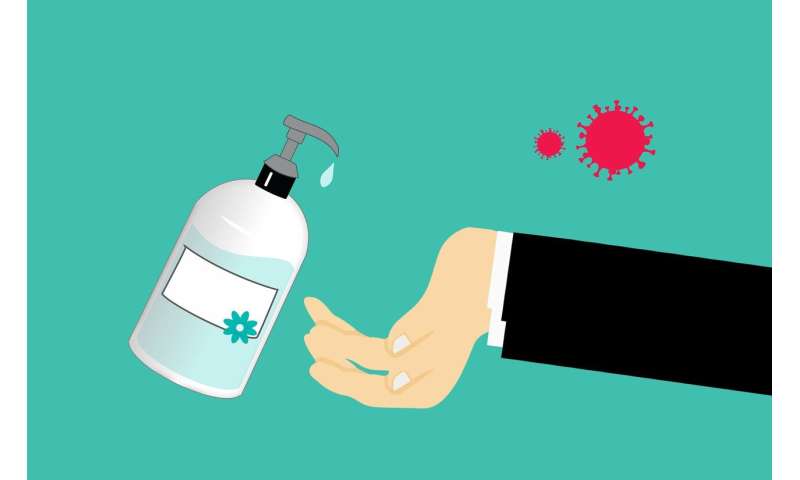
The need to wash our hands during the COVID-19 crisis has led to unprecedented demand for hand sanitizer. However, despite the label, cosmetic hand sanitizers may not be as effective as they claim to be.
Following the colossal demand for hand sanitizer, earlier this year the Federal Government’s Therapeutic Goods Administration (TGA) relaxed regulations on the manufacture of medical-grade (or therapeutic) hand sanitizer.
This meant businesses, including boutique wineries, breweries and distilleries could produce alcohol to make medical-grade hand sanitizer without TGA approval or notification.
These businesses must follow recipes developed by the World Health Organisation (WHO) resulting in formulations containing 80 per cent ethanol or 75 per cent isopropyl alcohol, both effective against the COVID-19 virus.
However, the requirement to follow the WHO formulations does not apply to common hand sanitizers found in the same shops.
Products that are for personal or domestic use, with no claims of effectiveness against viruses and use low-risk ingredients, are categorized as cosmetics.
Provided the product does not make misleading claims about its effectiveness, cosmetic hand sanitizers are not required to contain the requisite percentage of alcohol to be effective against the COVID-19 virus.
Dr Marco Rizzi and Professor Elise Bant from UWA’s Law School are working with Professor Jeannie Paterson and researcher Alex Jane from The University of Melbourne’s Law School to highlight the dangers.
Dr Rizzi said given the current high demand for hand sanitizers, consumer knowledge of the distinction between ‘cosmetic’ and ‘therapeutic’ sanitizers was crucial.
“We’ve expressed concerns about some sanitizers’ effectiveness against COVID-19, and the fact that some may kill germs but not necessarily viruses – this information isn’t always clear,” Dr Rizzi said.
“It is also unclear whether cosmetic sanitizers have the requisite percentage of alcohol to effectively protect against COVID-19. While these brands are required to label their products with their ingredients, it is not required that the percentage of alcohol used is included.
“This includes many popular brands that claim effectiveness against 99.9 per cent of germs, however these germs may not include viruses like COVID-19.”
“The possibility that many consumers are in the dark concerning the effectiveness of cosmetic sanitizers is troubling and, potentially, dangerous.”
In order for consumers to appreciate this distinction, they need access to the alcohol concentration of cosmetic products.
Dr Rizzi said that while the Government’s relaxation on therapeutic sanitizers was to be applauded it must come with the necessary information.
“Despite the risk, the Government has done little to bridge this information gap,” Dr Rizzi said.
“Not only are most consumers unaware of the distinction between cosmetic and therapeutic sanitizers, they have no practical means to find out the alcohol content of cosmetic sanitizers.”
“This is particularly troubling at a time when national and international authorities are pushing for the use of hand sanitizer if you can’t wash your hands with soap.”
Source: Read Full Article
